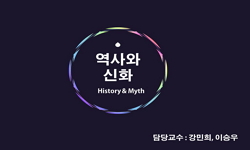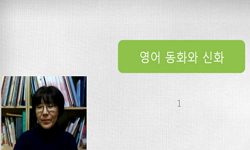Kim-ku(金九) had ever earnestly requested in Baekbeom Ilji(白凡逸志) that he felt sad about Independence movement and family history of father and son, Lee Myeong-ok, Lee Hyo-sang, so descendents memorize their achievements after the restoration...
http://chineseinput.net/에서 pinyin(병음)방식으로 중국어를 변환할 수 있습니다.
변환된 중국어를 복사하여 사용하시면 됩니다.
- 中文 을 입력하시려면 zhongwen을 입력하시고 space를누르시면됩니다.
- 北京 을 입력하시려면 beijing을 입력하시고 space를 누르시면 됩니다.

李溟玉·李孝相 부자의 독립운동과 가족사 = Independence Movement and Family History of Father and Son, Lee Myeong-ok(李溟玉), Lee Hyo-sang(李孝相)
한글로보기부가정보
다국어 초록 (Multilingual Abstract)
Lee Myeong-ok was born in Geumcheon, Hwanghaedo in 1896. He was an ordinary youth in a colony until 3·1 movement in 1919. An opportunity to bring a great change to his life was 3·1 movement. He exiled to Shanghai in 1922 where Korean Provisional Government was through Manchuria to avoid arrest by Japan.
He did independence movement in Shanghai while learning industrial technology etc. While he worked for English tram car company in Shanghai as a ticket examiner, he came to live a stable life to some degree. So, he let his wife, daughter Sang-ae, and son Hyo-sang come to Shanghai to stay together there.
At the same time he was active in independence movement. He had got along with Kim-ku who was born in Hwanghaedo like Lee Myeong-ok since he came to Shanghai. Especially, he carried out a mission that he invited Korean youth and sent them to Korean special class in China military school –after Yun Bong-gil’s historic deed on April, 1932, the admission was possible by Kim-ku’s interview with Chiang Kai-shek of China. He was arrested by Japanese police in Shanghai because of this activity.
Lee Hyo-sang, the son of Lee Myeong-ok showed strong hatred against Japan from childhood. Kim-ku, a hero of Chihapo accident was his role model. After his father was arrested in 1935, he joined an organization for independence movement in Nanjing without reluctance, entered China military school, and finished military training. In October, 1938, he joined Korean Volunteer Corps which was founded as an armed forces body for the first time in the area. As he was a brave member, he was titled as ‘model boy soldier’.
He was sent to Shanghai as a member of independent squad in 1941 and developed activity to maneuver in the rear of enemy. While he invited Korean youth who join maneuvering of Korean Volunteer Corps, he was arrested by Japanese police in Shanghai. His mother died of a disease caused by shock to hear the news. Lee Hyo-sang also passed away by physical pain just after being arrested and mental shock caused by misfortune of family.
Where and how he passed away can be guessed only because there are no concrete materials related. His death and tough family history were known to Korean society in Shanghai and Chongqing then times verbally and developed to myth of independence movement. Independence movement of father and son, Lee Myeong-ok, Lee Hyo-sang, and myth of the family history were a historical product born from limitation in space then times, addition or reduction to content in the course of verbal transmission, hope from independence movement group who waited for a hero etc.
Kim-ku(金九) had ever earnestly requested in Baekbeom Ilji(白凡逸志) that he felt sad about Independence movement and family history of father and son, Lee Myeong-ok, Lee Hyo-sang, so descendents memorize their achievements after the restoration of independence. There is belated regret but this study tried to restore their family history which had been forgotten.
Lee Myeong-ok was born in Geumcheon, Hwanghaedo in 1896. He was an ordinary youth in a colony until 3·1 movement in 1919. An opportunity to bring a great change to his life was 3·1 movement. He exiled to Shanghai in 1922 where Korean Provisional Government was through Manchuria to avoid arrest by Japan.
He did independence movement in Shanghai while learning industrial technology etc. While he worked for English tram car company in Shanghai as a ticket examiner, he came to live a stable life to some degree. So, he let his wife, daughter Sang-ae, and son Hyo-sang come to Shanghai to stay together there.
At the same time he was active in independence movement. He had got along with Kim-ku who was born in Hwanghaedo like Lee Myeong-ok since he came to Shanghai. Especially, he carried out a mission that he invited Korean youth and sent them to Korean special class in China military school –after Yun Bong-gil’s historic deed on April, 1932, the admission was possible by Kim-ku’s interview with Chiang Kai-shek of China. He was arrested by Japanese police in Shanghai because of this activity.
Lee Hyo-sang, the son of Lee Myeong-ok showed strong hatred against Japan from childhood. Kim-ku, a hero of Chihapo accident was his role model. After his father was arrested in 1935, he joined an organization for independence movement in Nanjing without reluctance, entered China military school, and finished military training. In October, 1938, he joined Korean Volunteer Corps which was founded as an armed forces body for the first time in the area. As he was a brave member, he was titled as ‘model boy soldier’.
He was sent to Shanghai as a member of independent squad in 1941 and developed activity to maneuver in the rear of enemy. While he invited Korean youth who join maneuvering of Korean Volunteer Corps, he was arrested by Japanese police in Shanghai. His mother died of a disease caused by shock to hear the news. Lee Hyo-sang also passed away by physical pain just after being arrested and mental shock caused by misfortune of family.
Where and how he passed away can be guessed only because there are no concrete materials related. His death and tough family history were known to Korean society in Shanghai and Chongqing then times verbally and developed to myth of independence movement. Independence movement of father and son, Lee Myeong-ok, Lee Hyo-sang, and myth of the family history were a historical product born from limitation in space then times, addition or reduction to content in the course of verbal transmission, hope from independence movement group who waited for a hero etc.
참고문헌 (Reference)
1 "「李光福 判決文」, 刑公合第三十號"
2 "李光福 身分帳指紋原紙"
3 국사편찬위원회, "한국독립운동사 자료 21, 임정편 Ⅵ" 1992
4 김학철, "최후의 분대장" 문학과지성사 1995
5 독립기념관, "중국신문 한국독립운동기사집(1)" 조선의용대(군) 2008
6 김광재, "중국관내지역 韓人의 국적 문제 일고찰 - 1933년 廣州에서의 ‘朴義一’ 체포를 둘러싼 中日佛 교섭을 중심으로 -" 한국사학회 (110) : 391-446, 2013
7 "조선중앙일보"
8 한상도, "조선의용대의 국제연대 의식과 대만의용대" 11 : 1999
9 김학철문학연구회, "조선의용군 최후의 분대장 김학철" 연변인민출판사 1995
10 김광재, "일제시기 上海 고려인삼 상인들의 활동" 한국독립운동사연구소 (40) : 221-264, 2011
1 "「李光福 判決文」, 刑公合第三十號"
2 "李光福 身分帳指紋原紙"
3 국사편찬위원회, "한국독립운동사 자료 21, 임정편 Ⅵ" 1992
4 김학철, "최후의 분대장" 문학과지성사 1995
5 독립기념관, "중국신문 한국독립운동기사집(1)" 조선의용대(군) 2008
6 김광재, "중국관내지역 韓人의 국적 문제 일고찰 - 1933년 廣州에서의 ‘朴義一’ 체포를 둘러싼 中日佛 교섭을 중심으로 -" 한국사학회 (110) : 391-446, 2013
7 "조선중앙일보"
8 한상도, "조선의용대의 국제연대 의식과 대만의용대" 11 : 1999
9 김학철문학연구회, "조선의용군 최후의 분대장 김학철" 연변인민출판사 1995
10 김광재, "일제시기 上海 고려인삼 상인들의 활동" 한국독립운동사연구소 (40) : 221-264, 2011
11 김광재, "어느 상인독립군 이야기" 선인 2012
12 "앞길"
13 김광재, "상해 仁成學校 유지운동과 폐교" 9 : 2012
14 윤유석, "백범일지의 한국근대사 내러티브(이야기 서술) 특징" 8 : 2010
15 선우진, "백범선생과 함께한 나날들-백범김구 비서 선우진 회고록" 푸른역사 2008
16 양윤모, "백범 김구의 ‘치하포사건’ 관련기록 검토" 한국고문서학회 22 : 271-296, 2003
17 도산안창호선생전집편찬위원회, "동우회 II·흥사단우 이력서, In 島山安昌浩全集 제10권" 2000
18 국사편찬위원회, "대한민국임시정부자료집35(한국국민당1)" 국사편찬위원회 2009
19 白凡金九先生全集編纂委員會, "대한민국임시정부 I, In 白凡金九全集 제4권" 대한매일신보사 1999
20 김상옥, "김상옥·나석주 항일실록" 삼경당 1986
21 "韓泰東 구술(김광재 면담)"
22 국사편찬위원회, "韓民族獨立運動史資料集 43" 2000
23 "韓民"
24 "解放日報"
25 白凡金九先生全集編纂委員會, "親筆 白凡逸志·屠倭實記, In 白凡金九全集 제1권" 대한매일신보사 1999
26 金振林, "臺灣義勇隊在金華" 九州出版社 2005
27 "申報"
28 "東亞日報"
29 金正明, "朝鮮獨立運動 2" 原書房 1967
30 "崔允信 구술(김광재 전화)"
31 李明花, "島山安昌浩의 獨立運動과 統一路線" 景仁文化社 2002
32 金光, "尹奉吉傳" 韓光社 1934
33 荻野富士夫, "外務省警察史 - 在留民保護取締と特高警察機能" 校倉書房 2005
34 國會圖書館, "『韓國民族運動史料』 中國篇" 1976
35 "≪獨立新聞≫(重慶版)"
36 권대웅, "1910년대 국내독립운동" 독립기념관 한국독립운동사연구소 2008
동일학술지(권/호) 다른 논문
-
- 한국근현대사학회
- 한철호
- 2013
- KCI등재
-
일본군의 3·1운동 탄압과 조선통치방안―『朝鮮騷擾事件關係書類』를 중심으로―
- 한국근현대사학회
- 이양희
- 2013
- KCI등재
-
마약법 제정 이후 한국의 마약문제와 국가통제(1957∼1976)
- 한국근현대사학회
- 조석연
- 2013
- KCI등재
-
- 한국근현대사학회
- 남금자
- 2013
- KCI등재
분석정보
인용정보 인용지수 설명보기
학술지 이력
| 연월일 | 이력구분 | 이력상세 | 등재구분 |
|---|---|---|---|
| 2026 | 평가예정 | 재인증평가 신청대상 (재인증) | |
| 2020-01-01 | 평가 | 등재학술지 유지 (재인증) |  |
| 2017-01-01 | 평가 | 등재학술지 유지 (계속평가) |  |
| 2013-01-01 | 평가 | 등재학술지 유지 (등재유지) |  |
| 2010-01-01 | 평가 | 등재학술지 유지 (등재유지) |  |
| 2008-01-01 | 평가 | 등재학술지 유지 (등재유지) |  |
| 2005-01-01 | 평가 | 등재학술지 선정 (등재후보2차) |  |
| 2004-01-01 | 평가 | 등재후보 1차 PASS (등재후보1차) |  |
| 2003-01-01 | 평가 | 등재후보학술지 선정 (신규평가) |  |
학술지 인용정보
| 기준연도 | WOS-KCI 통합IF(2년) | KCIF(2년) | KCIF(3년) |
|---|---|---|---|
| 2016 | 0.66 | 0.66 | 0.71 |
| KCIF(4년) | KCIF(5년) | 중심성지수(3년) | 즉시성지수 |
| 0.65 | 0.62 | 1.675 | 0.11 |




 KCI
KCI 스콜라
스콜라







